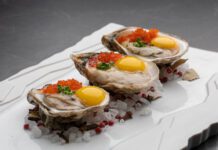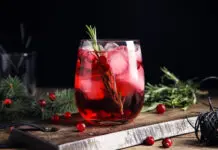Tony Henry knows a few things about operating businesses in Oklahoma. After all, the managing partner of Tulsa’s Full Moon Café and Wolfgang Puck Bistro has owned numerous restaurants in the state and has dealt with myriad challenges.
Henry, like many other business owners, believes that for all the accolades Oklahoma has received, there remain many potholes in the road to a good statewide business environment.
In the past few years, that environment has been lauded in magazines and in the reporting on national and regional surveys. However, small and mid-size business owners in Oklahoma find that there remain distinctive barriers to the success and expansion of homegrown businesses, and feel that the state could do more to foster a healthy private sector.
“One of the biggest issues for us is workers’ compensation – it is so expensive,” says Christine Booth, co-owner of Hawley Design Furnishings.
“We had a woodworker with an injury who went to a local emergency center. It cost $1,700 and the company paid only $300. And we have a good (provider). The bill every month is so high and the return is so little. It’s almost worthless.”
Tony Jordan, manager of Jordan and Sons homebuilders says that he hasn’t yet had to deal with a Workers’ Compensation claim.
“Thank God, I haven’t had to,” Jordan says. “I’ve got seven employees and workers’ comp is expensive in Oklahoma.”
In fact, workers’ comp rates in Oklahoma are higher than any other state in the region and have been escalating dramatically. According to a comparative study conducted by the State of Oregon, Oklahoma had the fourth highest rates in the country as of 2010, having risen from ninth nationally in just 2008, and from 15th in 2004. By comparison, Texas has seen its (already moderate) rates decline, and Arkansas and Colorado have some of the lowest rates in the nation.
“That’s wrong,” Jordan says. “We don’t like insurances as is – there is no benefit. There should be benefits for those of us who don’t have claims.”
Henry says that one likely cause of the state’s high rates is fraud.
“It’s the system that needs modification,” Henry says. “We need something that gets workers back to work quicker and which reduces fraud. Workers’ comp systems have a lot of fraud. Sometimes in Oklahoma, people sit at home and are happy to get paid for it.”
“Because we have such a huge deficit, government should look at itself and ask how it could make things easier.”
Henry says the state could address this business barrier.
“A lot of business owners would like to see more enforcement and penalties related to workers’ comp fraud,” he says.
Many feel that healthcare is another obstacle.
“There are things out there like Insure Oklahoma to supposedly help with health insurance rates, but you have to go through hoops for it and if you are even slightly successful in your business, it’s no help at all,” says web designer John Coffey of Bixby’s Hot Coffey Design. He adds that a group plan offered through his local chamber of commerce is also of no help – with the premiums being almost three times as high as a private policy.
Although Henry says he feels that Insure Oklahoma – a state program helping low-income workers acquire health insurance – is a good start, more needs to be done in the healthcare area.
“I’d like to see more programs like that,” Henry says. “I think a very high percentage of our employees are most likely uninsured. We’re very nervous about what’s proposed at the federal level because it won’t be affordable. It will drive some small businesses under.”
Booth says that Insure Oklahoma is still out of reach for her employees and that with the limited bargaining power of a small business, a company insurance plan is even further from reach.
Muskogee’s Alan Landry retired several years ago after operating numerous businesses around the state. He says he’s glad his days in business are over.
“It’s too expensive and too dangerous to be in business in Oklahoma today,” Landry says. “You never know when more regulations and fees are coming and it is outrageously expensive to even hire people. With payroll taxes, fees and whatever new mandates they cook up all the time, it’s impossible to plan long term and long-term planning is a key to success.”
Others certainly agree about the “cost” of hiring.
“Because of things like the worker’s comp rates, we’re looking at hiring more contractors than we are full-time employees,” Booth says.
Coffey says it is more cost-efficient to hire people overseas on a per-project basis even at up to $50 an hour than it is for him to hire employees.
“It works out better for me that way because there is no incentive for me to hire someone,” Coffey says. “I have never seen it worse for small businesses than it is today.”
“The bill every month is so high and the return is so little. It’s almost worthless.”
Amanda Duenner, president of Daniels Greer Properties, says that even Oklahoma’s much-praised quality of life advantages are matched by similarly themed shortcomings.
“When companies are considering relocating here, they look at things like that our school system is struggling, crime seems to be increasing and even that Oklahoma is one of the fattest states,” Duenner says. “All of these things relate to quality of life.”
Despite keen awareness of Oklahoma’s business pitfalls, small and mid-size business owners still believe there are things communities and government can do to improve the situation. Besides action in terms of Worker’s Compensation rates and health care, other suggestions abound.
Duenner, for example, believes the state would be better served by more direct flights from the international airports.
“I’ve heard a lot that Tulsa is very hard to get to,” she says.
Duenner says that additional incentives to attract and retain businesses could also be helpful.
Booth agrees.
“There are things the state could do to promote Oklahoma businesses,” she says. “For example, there are a lot of trade shows that are very expensive to attend. It would be helpful if the state sent a contingent to these shows to promote Oklahoma businesses.”
Henry says that dealing with state bureaucracy is a regular challenge but that it shouldn’t be.
“Because we have such a huge deficit, government should look at itself and ask how it could make things easier,” he says. “What’s good for us is good for them and that helps with their deficit.”
Coffey says that government should have the funds it needs for improvements.
“There was supposed to be all this money from (lottery) and from casinos, but I don’t see it.”























